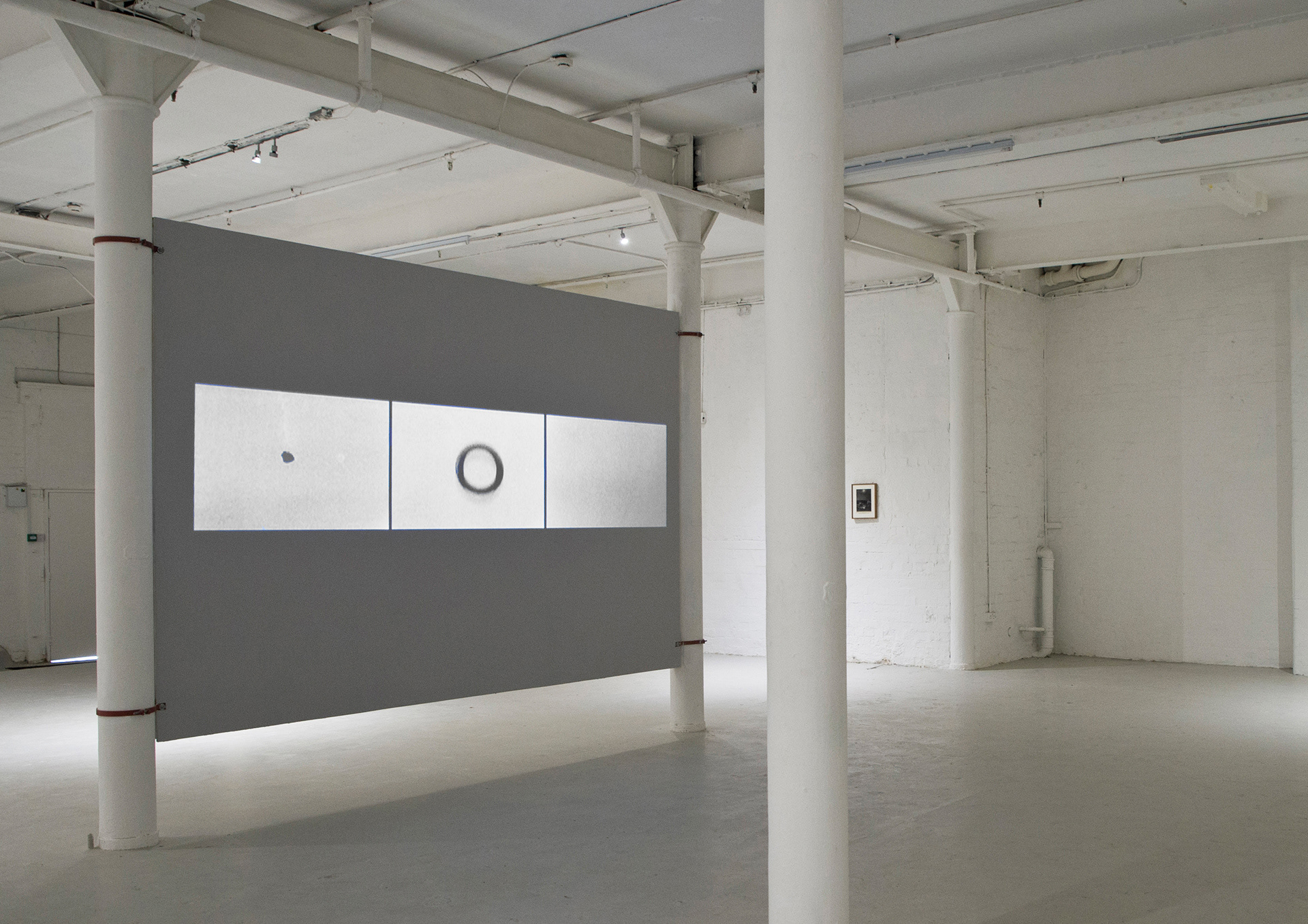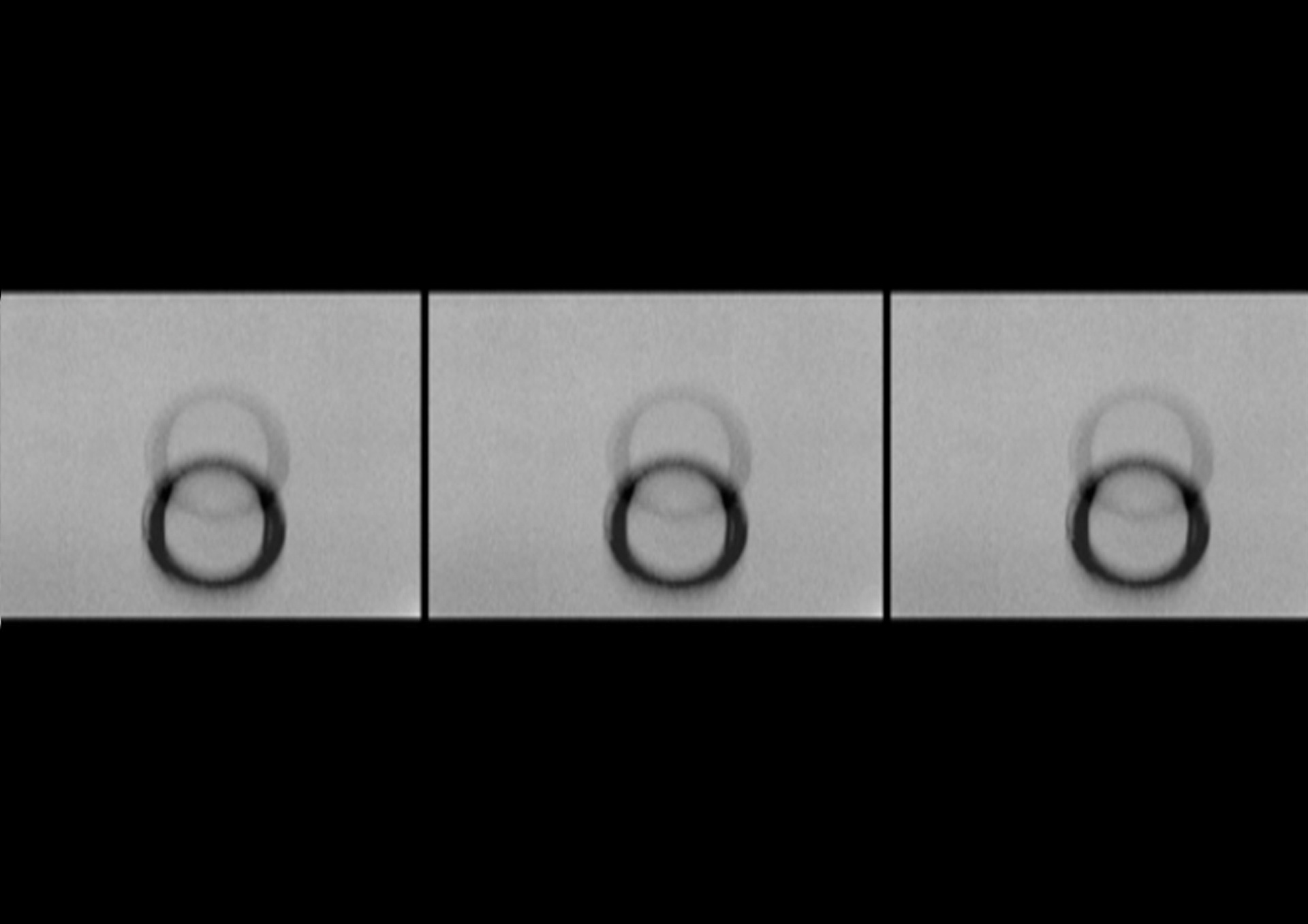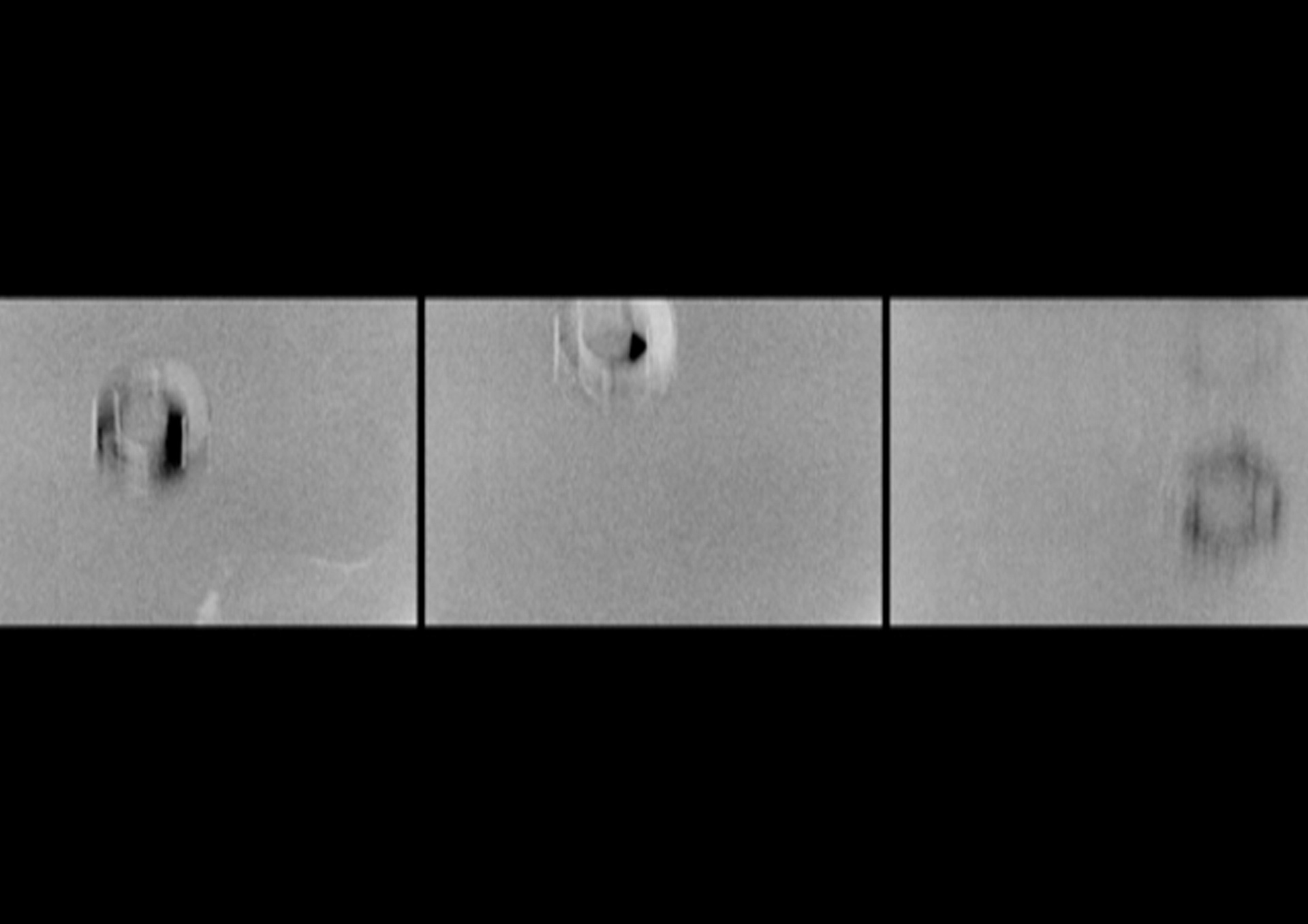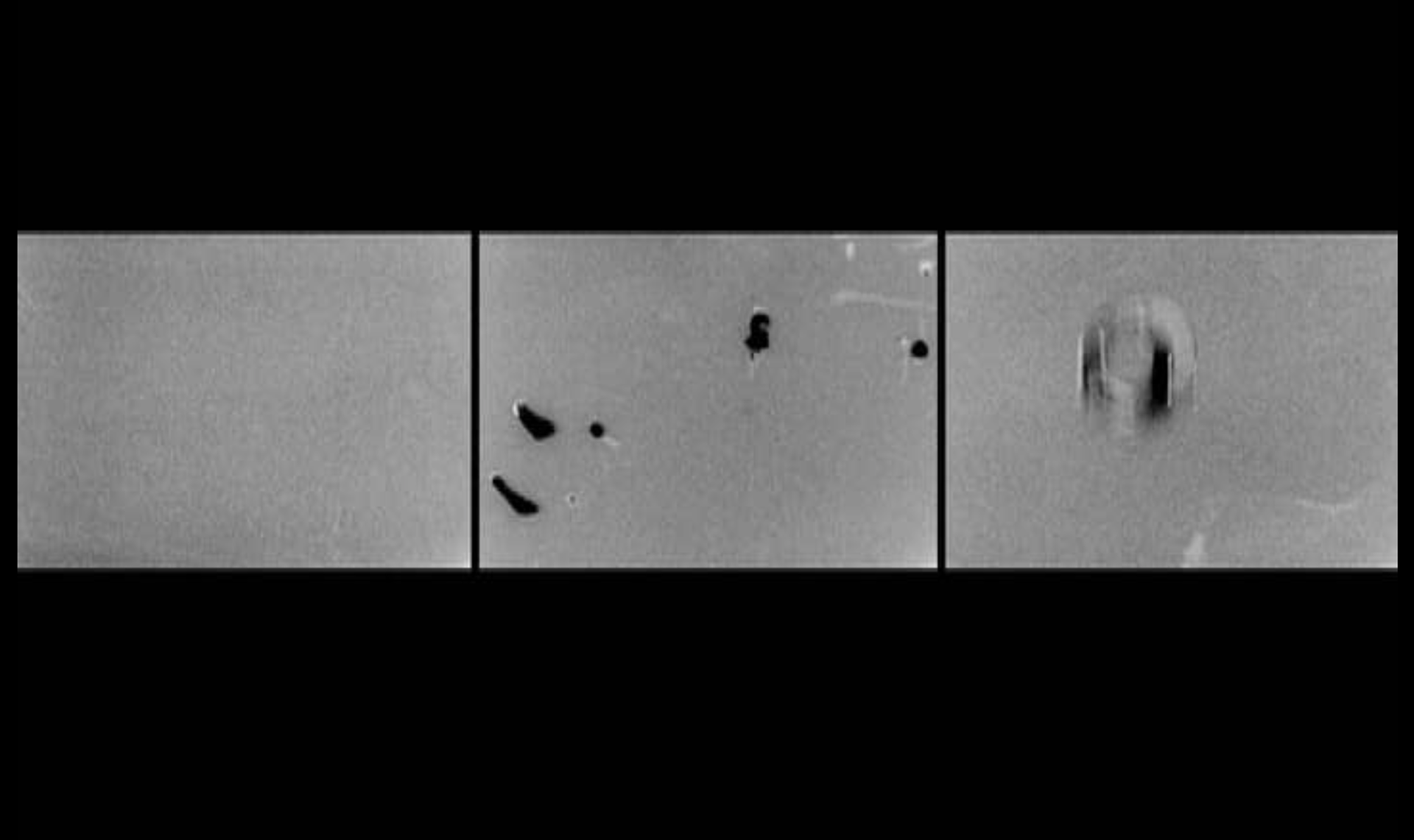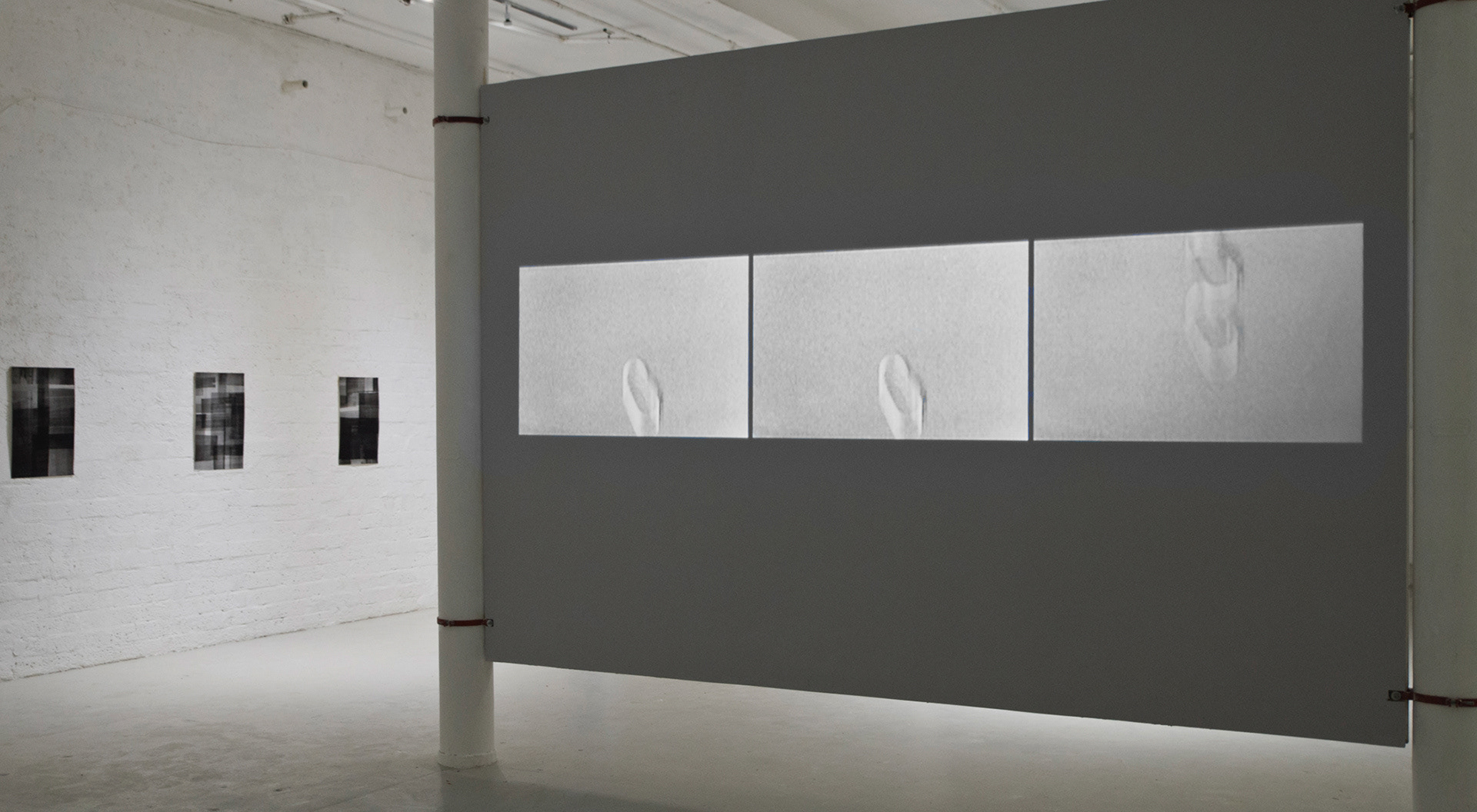16mm film (digitised), sound
'The Hole In The Donut’ is a moving image piece that explores the representation and destabilization of linear conceptions of time. Astronomical phenomena serve as points of reference; celestial orbits and cycles, lunar/solar eclipses, and the periodic alignment of planets in the sky. The piece addresses the absurd, futile and melancholic human need to make sense, order and pattern out of a vast, often chaotic, universe. These phenomena are considered by way of an investigation into the limits of analogue photographic media, utilizing structural filmmaking techniques such as fixed framing, accelerated shutter speed, close up shots, slow motion, and the polyrhythmic use of three conflicting rhythms. Circular props of various sizes, which act as frames for negative space, are dropped in front of a 16mm camera lens in a particular order. The descending objects are then edited into a triptych of three separate rhythmic pieces, played out alongside one another. The cascading objects and sounds, though initially in unison, immediately begin to fall out of sync, eventually realigning, only to dissolve into disharmony once again. This elliptical process repeats infinitely. The loops act as interruptions to linear forward movement, and instead, like planets within a solar system, the objects are bound together in a diverging and intersecting, contrapunctal system. The space created by these loops is that of a perpetual present, emphasized by the torus shaped objects that in themselves have no beginning or end point. The title references a nickname given to Buster Keaton for his early cinematic deadpan, automaton-like performances, while also acknowledging the formal qualities of the piece's content and structure.
